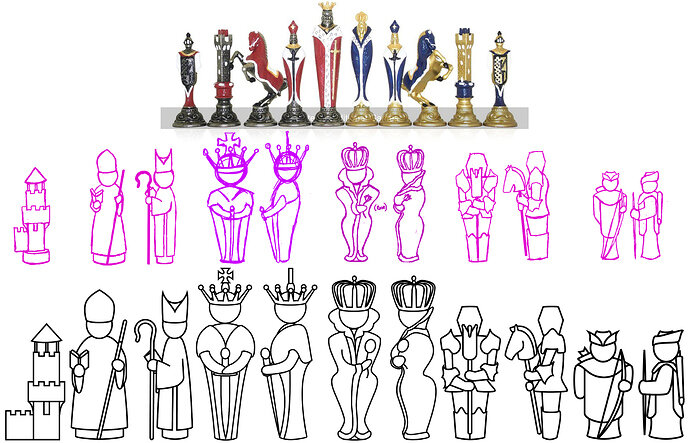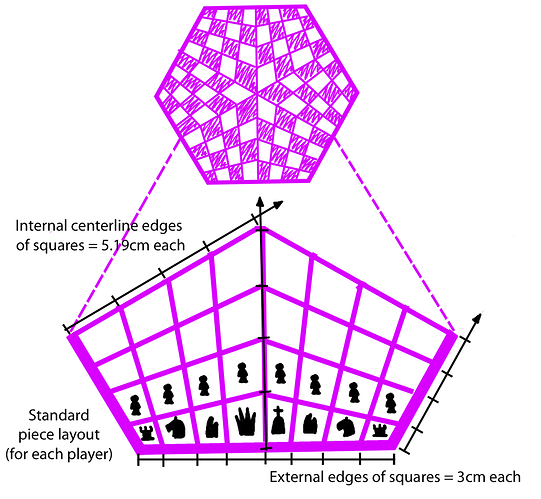So, a bit like @bunnyUFO , I’ve decided I want to deviate some from the ‘standard’ Staunton-style chess pieces and have a crack at making my own pieces - partly because this is my second time through, so I (should) have most of the concepts down already.
I found an existing chess set I quite like, and used it to inspire my own designs (mostly):
I fully expect the actual models to undergo a number of changes, both because of the relative lack of rotational symmetry, and because of the ‘low poly’ restriction, though I’m hoping textures may help there (the rose the queen is holding, for example, I’m already planning to texture rather than model in any detail).
I’m also planning to have a ‘standard’ base for each piece to sit on: this will be largest for the king (2.5cm diameter), smallest for the pawns (2cm diameter), and 2.25cm for all the other pieces; each piece shouldn’t extend beyond their base, with the exception of the castle, which will have a 0.75cm overhang for its wall section. Height-wise, the king should be 8cm in total, the queen 7.5cm, bishops 6cm, knights 5.5cm, castles 5cm, and pawns 4cm.
I’m also going to make this 3-player chess (for the lulz), with a hexagonal board of irregular quads instead of squares:
Making the external (shortest) quad edges 3cm means that while the pawns may end up looking a bit lost in the larger ‘squares’, there’s room for the king to hide in an external corner!
In the immortal words of Leeroy: “Let’s do this!”





